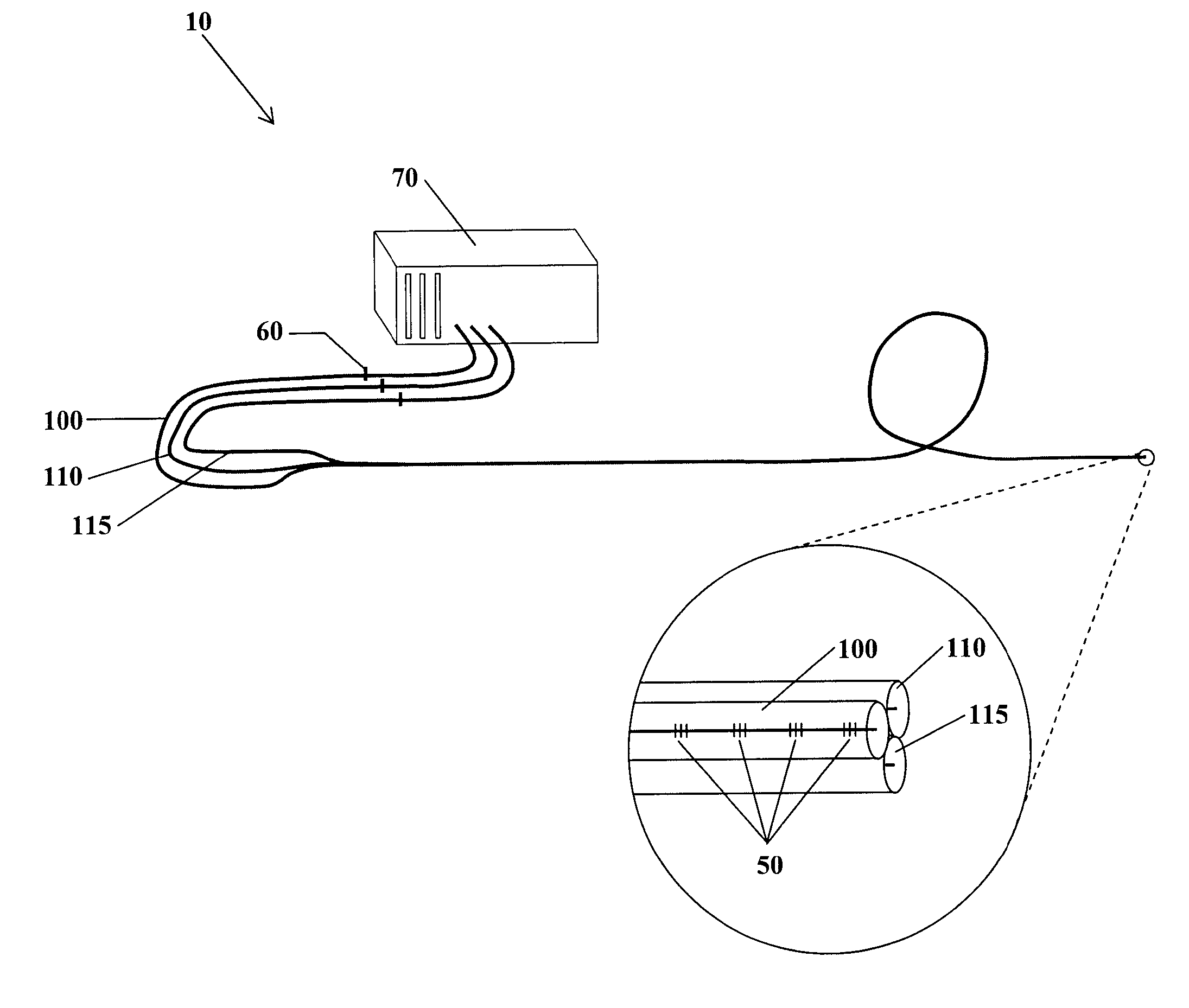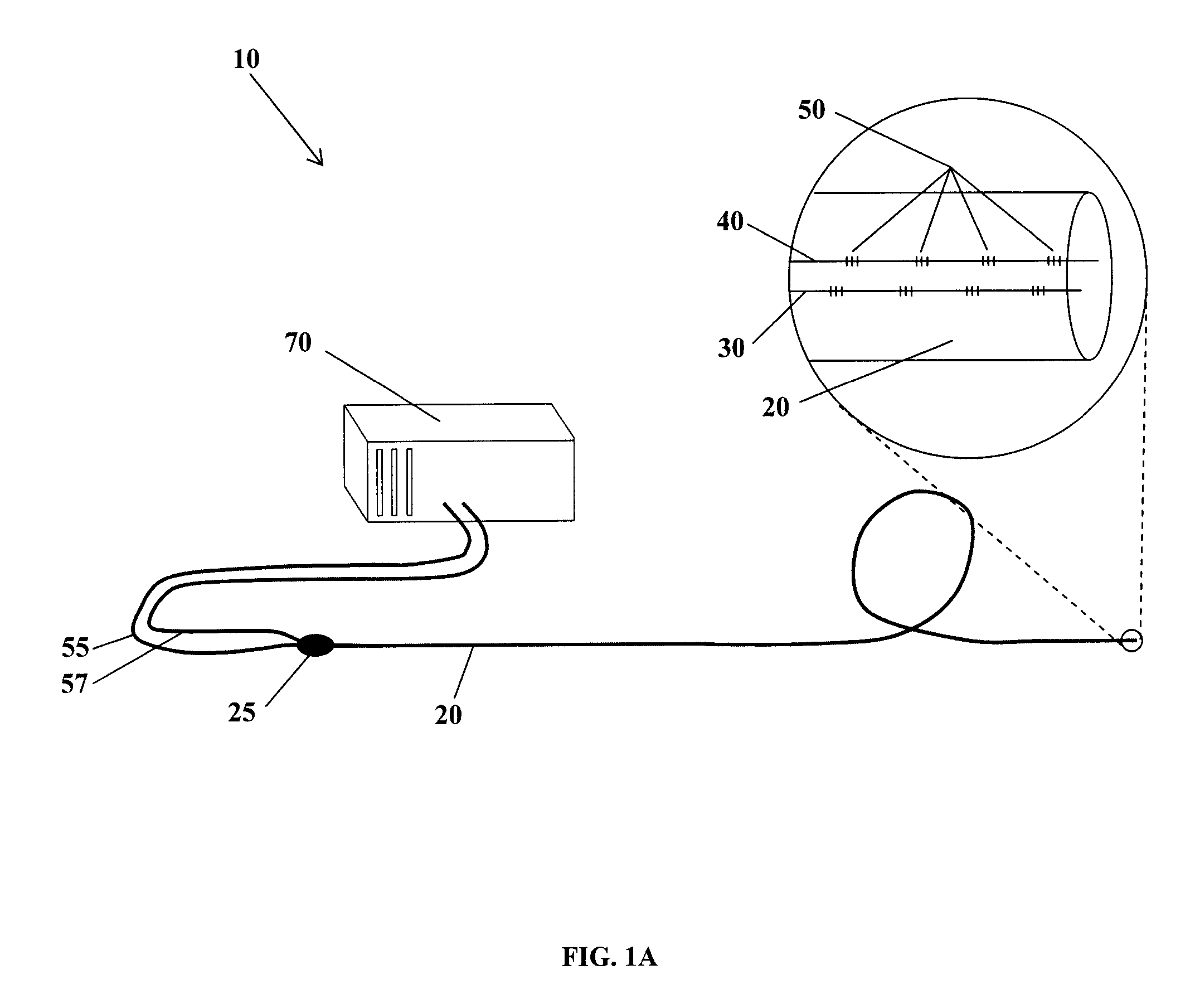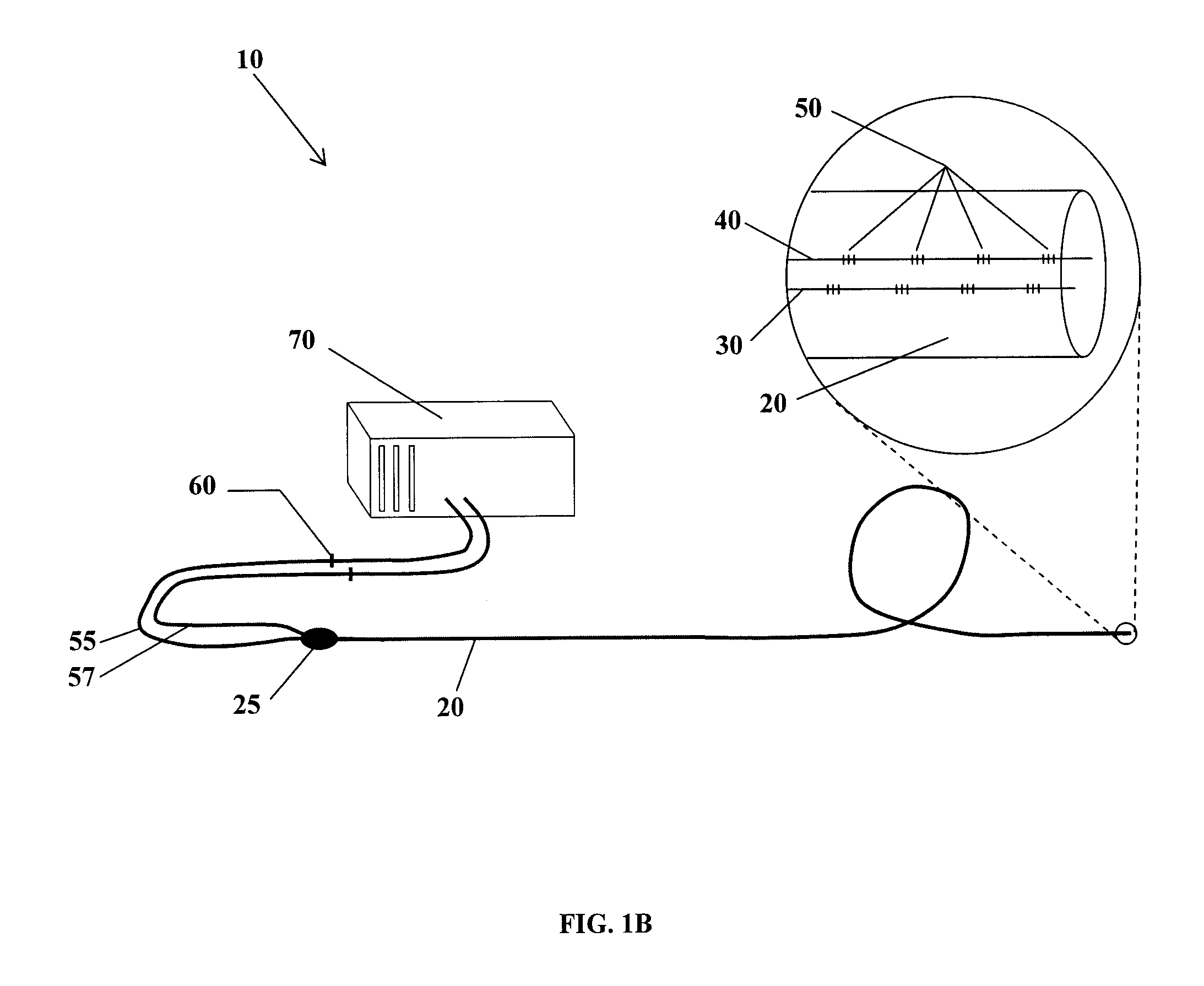Fiber optic position and shape sensing device and method relating thereto
a fiber optic position and shape sensing and fiber optic technology, applied in the field of fiber optic sensing, can solve the problems of limited range of wave division multiplexing coupled with fiber bragg gratings, inability system where cross-talk or mode coupling occurs between fiber cores, etc., to achieve high spatial resolution, limited range, and high accuracy
- Summary
- Abstract
- Description
- Claims
- Application Information
AI Technical Summary
Benefits of technology
Problems solved by technology
Method used
Image
Examples
example 1
[0072]Shape sensors wherein the optical fiber means comprises three single core optical fibers were surface attached to the outside of an inflatable isogrid boom that was approximately 1.2 m in length. The fiber optic sensor arrays, each containing approximately 120 sensors with a 0.5 cm gauge length spaced at 1 cm intervals, center-to-center, ran along the entire axial length of the boom oriented 120° with respect to each other. The boom was fixed at one end while the other end was unattached in a classic cantilever beam set-up. Various weights were then placed on the free-floating end while strain measurements were taken to monitor the dynamic shape of the structure. A standard height gauge was used to directly measure the deflection of the end of the boom for the purposes of data correlation. Upon comparison of the data, there was an excellent correlation between the fiber optic shape sensors and the height gauge. With a mass of 2.5 kg suspended from the end, the height gauge ind...
example 2
[0073]An isogrid boom was fixed at one end while the other end was unattached in a classic cantilever beam set-up. Various weights were then placed on the free-floating end while measurements were taken to monitor the shape / relative position of the structure using the fiber optic position and shape sensing device of the present invention. Laser displacement sensors at four locations were suspended above the boom to directly measure the deflection of the boom for the purposes of data correlation. Table 1 shows the percent error between the laser displacement sensors and fiber optic shape sensors. This data is depicted graphically in FIG. 10.
[0074]
TABLE 1Sensor Location (mm)Load (g)1235936568283 0 1322.1912.231.067.7 6231.3410.816.555.811323.919.5621.058.316323.099.6423.057.421322.139.5524.856.226321.4010.525.956.521322.059.5824.057.016322.9010.224.358.211323.4510.921.359.2 6321.5611.421.260.5 1323.1920.231.273.9 0Average2.2411.224.459.7
[0075]At each load, anywhere from 127 to 192 m...
example 3
[0076]An oscillator (LDS v-203 electrodynamic shaker) driven by a function generator and amplified by a power amplifier was attached to the free end of an isogrid boom which was attached in a classic cantilever beam configuration. A sinusoidal signal was used to drive the shaker with a displacement amplitude of roughly 1.6 mm, peak-to-peak (0.566 RMS) and frequencies of 0.5 and 1.0 Hz. The fiber optic position and shape sensing device of the present invention was attached to the isogrid boom and was used to capture dynamic shape data at roughly 2.189 Hz. Using the dynamic shape data captured by the sensing device while the beam was oscillating, modal analysis was performed. Approximately 2853 samples were taken at the 0.5 Hz oscillation mode. The frequency of oscillation was pinpointed to within roughly ±0.0004 Hz. The 1.0 Hz oscillation mode was sampled 240 times, yielding an accuracy of approximately ±0.0046 Hz. The results of this test show that the fiber optic position and shape...
PUM
 Login to View More
Login to View More Abstract
Description
Claims
Application Information
 Login to View More
Login to View More - R&D
- Intellectual Property
- Life Sciences
- Materials
- Tech Scout
- Unparalleled Data Quality
- Higher Quality Content
- 60% Fewer Hallucinations
Browse by: Latest US Patents, China's latest patents, Technical Efficacy Thesaurus, Application Domain, Technology Topic, Popular Technical Reports.
© 2025 PatSnap. All rights reserved.Legal|Privacy policy|Modern Slavery Act Transparency Statement|Sitemap|About US| Contact US: help@patsnap.com



